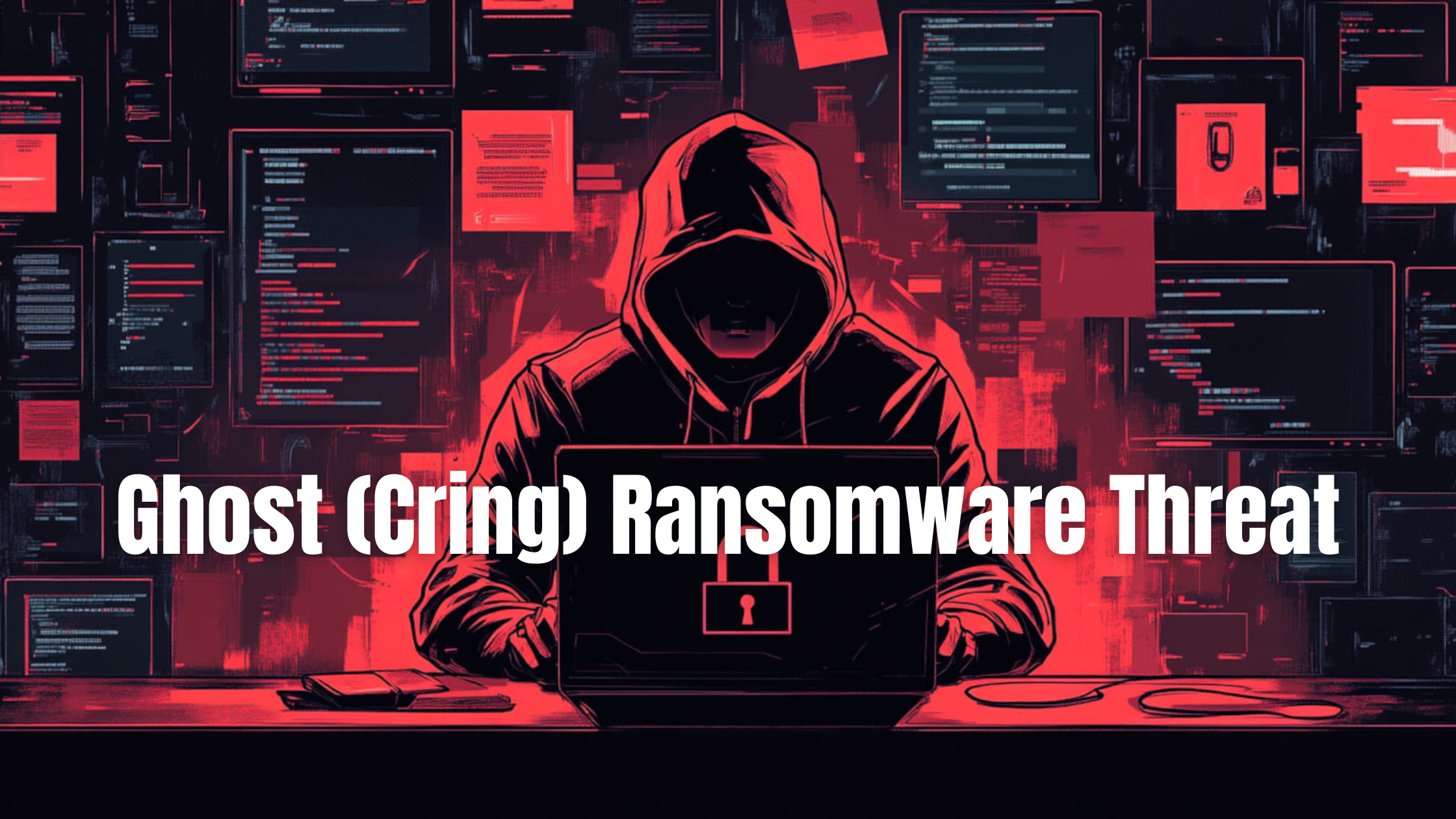Phone: +94 112 715 414
WhatsApp: +94 727 688 788
Email: [email protected]
Think Tank Technologies Pvt Ltd, Bay 6, Trace Lane, Trace Expert City, Colombo 10, Sri Lanka
Phone: +94 112 715 414
WhatsApp: +94 727 688 788
Email: [email protected]
Think Tank Technologies Pvt Ltd, Bay 6, Trace Lane, Trace Expert City, Colombo 10, Sri Lanka

In a recent joint Cybersecurity Advisory, the Federal Bureau of Investigation (FBI), Cybersecurity and Infrastructure Security Agency (CISA), and the Multi-State Information Sharing and Analysis Center (MS-ISAC) have highlighted the escalating threat posed by Ghost (Cring) ransomware—a dangerous malware targeting organizations through known vulnerabilities in widely used software.
Ghost ransomware is a highly sophisticated malware that encrypts data on compromised systems, rendering it inaccessible to users. Attackers then demand a ransom payment, typically in cryptocurrency, in exchange for the decryption key. This ransomware has been observed exploiting critical vulnerabilities to gain unauthorized access to networks, making it a significant cybersecurity threat.
The advisory identifies several Common Vulnerabilities and Exposures (CVEs) that Ghost ransomware actors have leveraged:
CVE-2018-13379: A path traversal vulnerability in Fortinet FortiOS SSL VPN web portals, allowing unauthenticated attackers to download system files.
CVE-2010-2861 & CVE-2009-3960: Vulnerabilities in Adobe ColdFusion that could permit arbitrary code execution.
CVE-2021-34473, CVE-2021-34523, CVE-2021-31207: Known collectively as ProxyShell vulnerabilities in Microsoft Exchange Server, enabling remote code execution and unauthorized access.
These vulnerabilities allow Ghost ransomware operators to infiltrate networks, deploy ransomware, and encrypt critical data.
Once inside a network, Ghost ransomware executes the following malicious activities:
Selective Encryption: Encrypts specific directories or entire system storage while avoiding critical system files to maintain basic functionality.
Log and Backup Deletion: Clears Windows Event Logs and disables the Volume Shadow Copy Service, making data recovery difficult.
Ransom Demands: Victims are pressured into paying tens to hundreds of thousands of dollars in cryptocurrency for data decryption.
Cybersecurity experts have identified several IOCs associated with Ghost ransomware attacks, including:
Unauthorized tools: Penetration testing software like Cobalt Strike and open-source proxies like IOX.
File Hashes: Specific MD5 file hashes, such as c5d712f82d5d37bb284acd4468ab3533 for Cring.exe, linked to Ghost ransomware activities.
Organizations must take proactive measures to mitigate Ghost ransomware threats and enhance cybersecurity resilience:
Maintain up-to-date backups stored separately from primary systems to prevent data loss during an attack.
Apply security updates promptly to address known vulnerabilities in operating systems, software, and firmware.
Isolate networks to restrict lateral movement from initially compromised devices to others within the organization.
Enforce MFA for all privileged accounts and email services to prevent unauthorized access.
By implementing these security best practices, organizations can significantly reduce the risk of Ghost ransomware attacks and safeguard their critical data.
For more detailed information and cybersecurity resources, refer to the full advisory on CISA’s official website: CISA Cybersecurity Advisory
As ransomware threats continue to evolve, cybersecurity awareness and proactive defense strategies are essential. Stay vigilant, keep systems updated, and prioritize cybersecurity to protect your organization from Ghost (Cring) ransomware and other emerging threats.
Stay secure. Stay informed. Act now!
